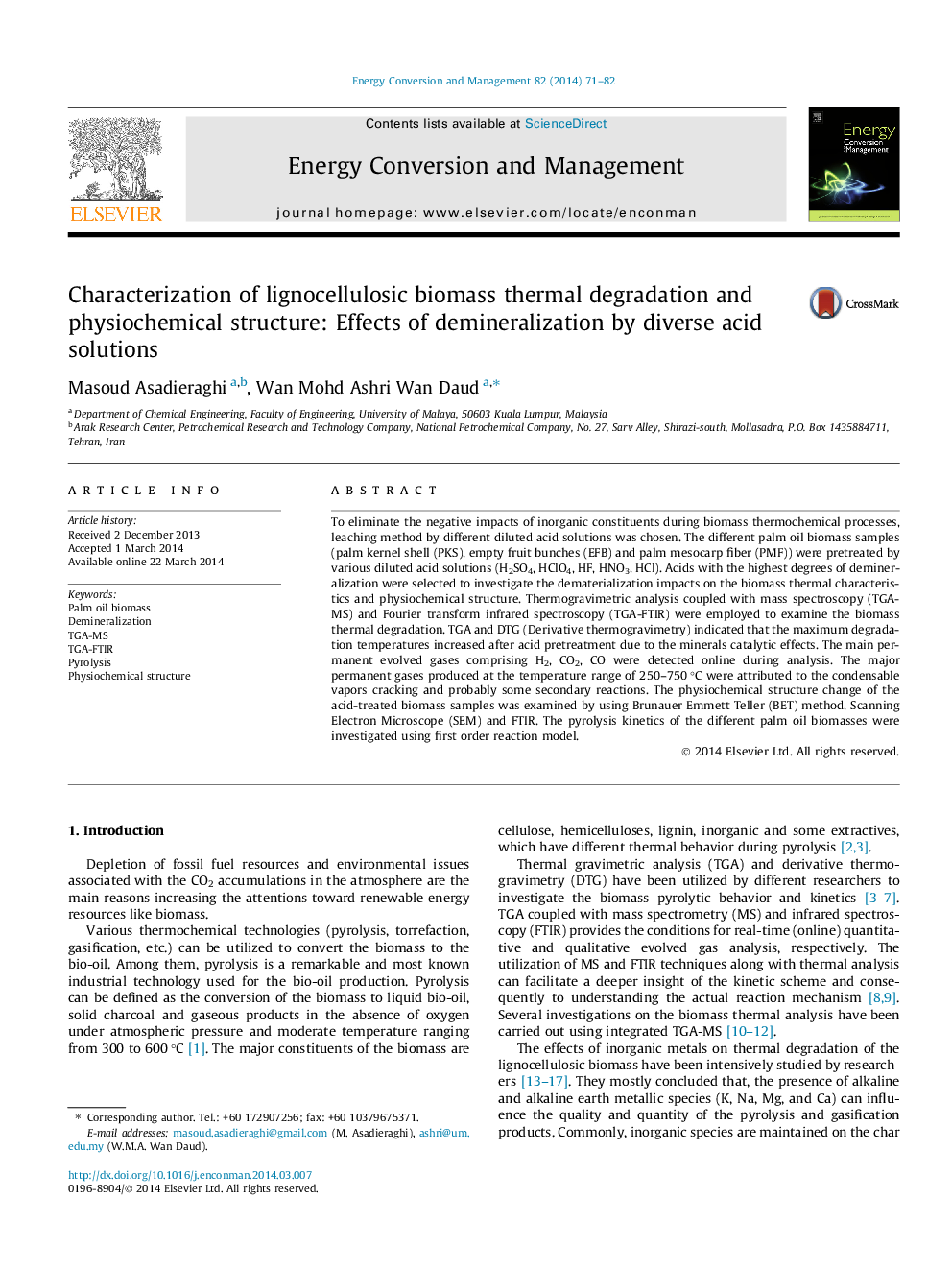| Article ID | Journal | Published Year | Pages | File Type |
|---|---|---|---|---|
| 7165137 | Energy Conversion and Management | 2014 | 12 Pages |
Abstract
To eliminate the negative impacts of inorganic constituents during biomass thermochemical processes, leaching method by different diluted acid solutions was chosen. The different palm oil biomass samples (palm kernel shell (PKS), empty fruit bunches (EFB) and palm mesocarp fiber (PMF)) were pretreated by various diluted acid solutions (H2SO4, HClO4, HF, HNO3, HCl). Acids with the highest degrees of demineralization were selected to investigate the dematerialization impacts on the biomass thermal characteristics and physiochemical structure. Thermogravimetric analysis coupled with mass spectroscopy (TGA-MS) and Fourier transform infrared spectroscopy (TGA-FTIR) were employed to examine the biomass thermal degradation. TGA and DTG (Derivative thermogravimetry) indicated that the maximum degradation temperatures increased after acid pretreatment due to the minerals catalytic effects. The main permanent evolved gases comprising H2, CO2, CO were detected online during analysis. The major permanent gases produced at the temperature range of 250-750 °C were attributed to the condensable vapors cracking and probably some secondary reactions. The physiochemical structure change of the acid-treated biomass samples was examined by using Brunauer Emmett Teller (BET) method, Scanning Electron Microscope (SEM) and FTIR. The pyrolysis kinetics of the different palm oil biomasses were investigated using first order reaction model.
Related Topics
Physical Sciences and Engineering
Energy
Energy (General)
Authors
Masoud Asadieraghi, Wan Mohd Ashri Wan Daud,
